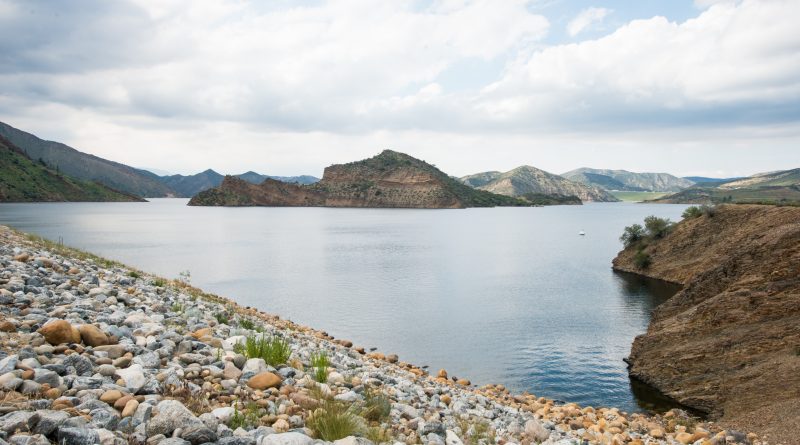Public urged to avoid water contact at Pyramid Lake due to algal bloom
The Department of Water Resources is urging the public to avoid contact with water at Pyramid Lake in Los Angeles County until further notice due to potentially harmful blue-green algae.
CASTAIC—An algal bloom at Pyramid Lake in Los Angeles County has the Department of Water Resources (DWR) warning the public not to swim or participate in any other water-contact recreation or sporting activities due to potential adverse health effects. However, DWR said boating at the lake is still allowed.
Pyramid Lake is a reservoir formed by Pyramid Dam on Piru Creek in the eastern San Emigdio Mountains, near Castaic and Interstate 5. The lake offers boating, fishing, jet skiing, and picnic areas, including 5 unique sites that are accessible only by boat, and courtesy docks.
DWR released the warning about the blue-green algae, also known as cyanobacteria, on July 3. Exposure to toxic blue-green algae can cause eye irritation, allergic skin rash, mouth ulcers, vomiting, diarrhea, and cold- and flu-like symptoms. DWR urges lake goers to keep pets away from the water as they can be especially susceptible because they tend to drink while in the water and lick their fur afterwards.
DWR also warned bloom conditions can change rapidly, and wind and waves may move or concentrate the bloom into different regions of the reservoir. The algal bloom can accumulate into mats, scum, or form foam at the surface and along the shoreline, and range in color from blue, green, white, or brown.
State guidelines on cyanobacteria and harmful algal blooms (HABs) recommend the following precautions be taken in waters impacted by blue-green algae:
- Do not let pets and livestock drink the water, swim through algal blooms, scum, or mats, or lick their fur after going in the water. Rinse pets in clean water to remove algae from fur.
- Avoid wading, swimming, or jet or water skiing in water containing algae blooms, scum, or mats.
- Do not drink, cook, or wash dishes with untreated surface water from these areas under any circumstances. Common water purification techniques such as camping filters, tablets, and boiling do not remove toxins.
- Do not eat fish or shellfish from this water.
- Get medical treatment immediately if you think that you, a family member, friend, pet, or livestock might have been poisoned by blue-green algae toxins. Be sure to alert medical professionals to the possible contact with blue-green algae. Also, make sure to contact the local county public health department.
Algal blooms are quite common in California, with some experts saying they are increasing in number, frequency, and severity across the state. Warm temperatures, stagnant water flows and excessive nutrients accelerate the growth of the organisms that cause HABs. As summer continues, the weather warms, and bodies of water start to evaporate at a higher rate, HABS are likely to increase in California’s waterways.
The California Department of Fish and Wildlife (CDFW) in June reminded anglers and other recreational water users to be vigilant about checking for HABs while out enjoying California’s lakes, reservoirs, rivers, streams and creeks.
HABs have a variety of looks and may take on the appearance of foam, scum, algal mats, or large chips of paint. Sometimes they hide out of sight and are not visible at the surface at all. HABS can also exude strong odors similar to the smell of rotting plants.


